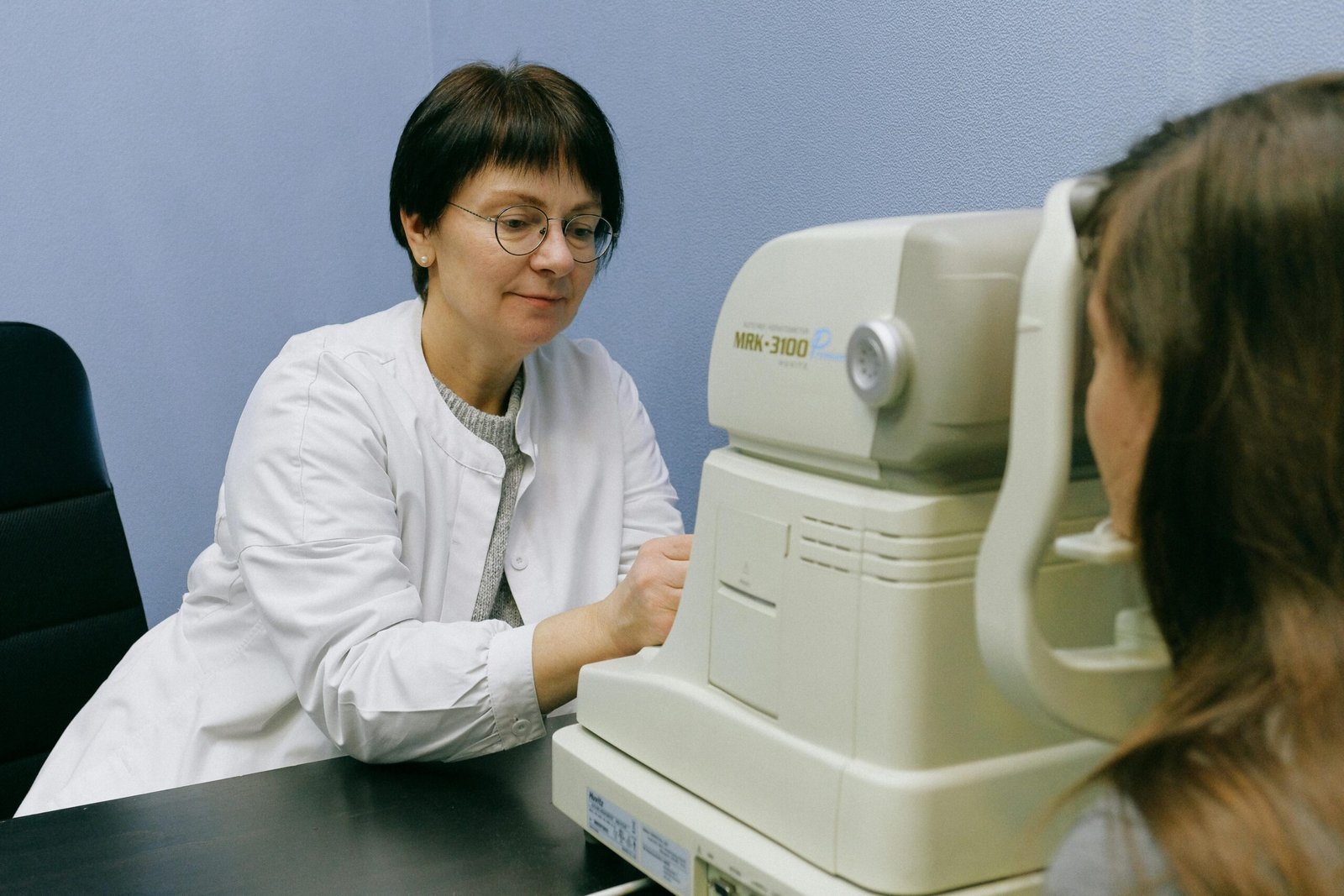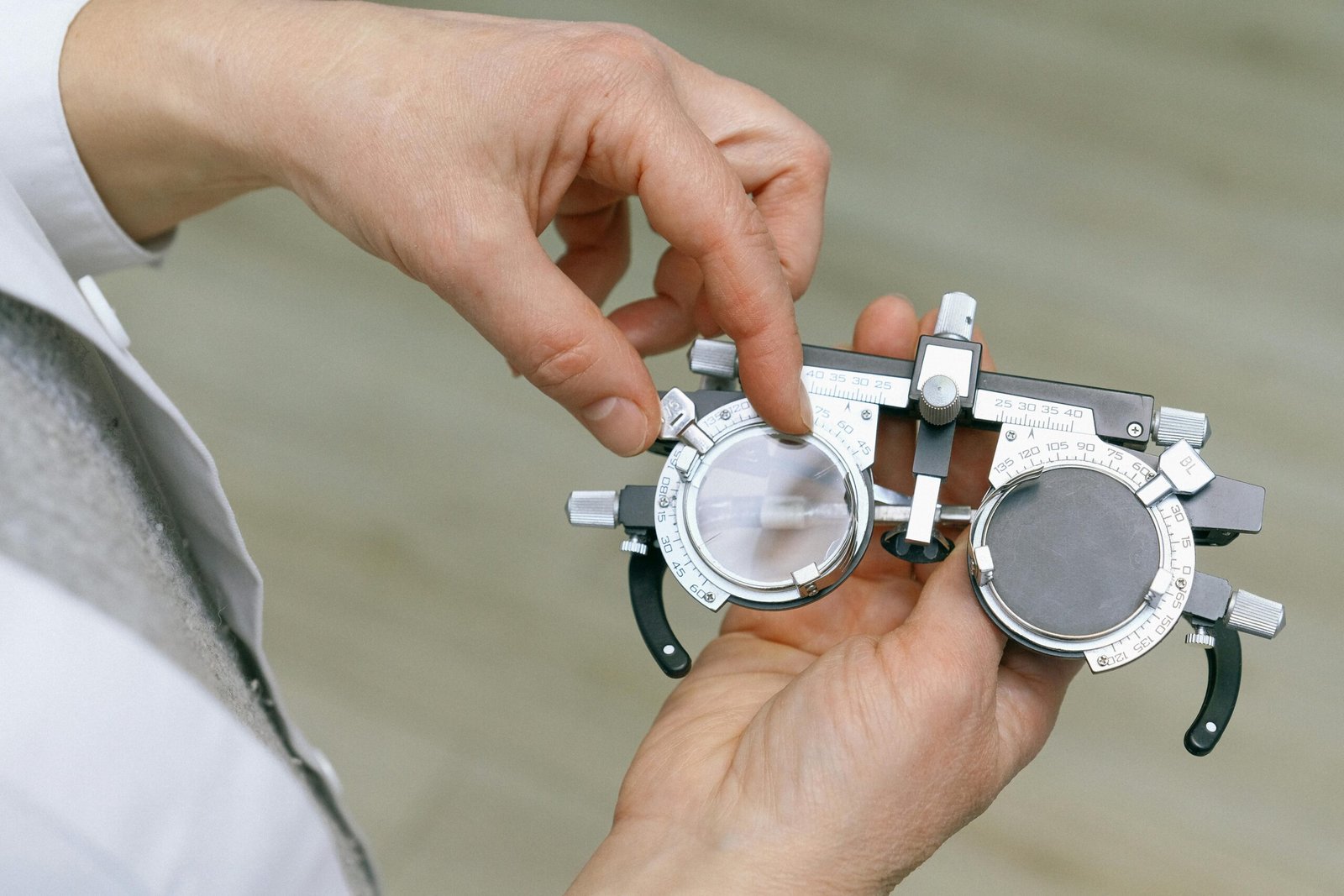Your eyes are crucial for experiencing the world around you, but they’re often overlooked in our daily routines. Maintaining optimal eye health is not just about clear vision—it’s essential for overall well-being. Whether you’re young or approaching your later years, taking proactive steps now can help ensure you maintain good vision for a lifetime. In this guide, we’ll explore proven strategies to safeguard your eye health and preserve your vision.

1. The Fundamentals of Eye Health: Understanding How Your Eyes Work
Before diving into eye care tips, it’s important to understand the basic function of your eyes.
How Your Eyes Function:
Your eyes consist of several components, including the cornea, pupil, lens, retina, and optic nerve, each serving a vital role in the process of vision. The cornea focuses light entering the eye, the pupil regulates light intake, and the retina captures visual information, transmitting it to the brain via the optic nerve. If any part of the eye is compromised, it can affect your vision.
Common Eye Conditions You Should Know:
Several conditions can impact your eyesight, including cataracts (clouding of the lens), glaucoma (damage to the optic nerve), and macular degeneration (affecting the central vision). Timely detection and treatment are key to managing these conditions and preventing further complications.
2. Healthy Habits for Maintaining Strong Eyesight
Good eye health is not just about medical treatment—daily habits play a significant role in preserving your vision. Here are some essential tips:
Regular Eye Exams:
One of the most effective ways to keep your eyes healthy is through regular eye exams with an optometrist or ophthalmologist. These professionals can identify potential issues such as glaucoma or cataracts early on, allowing for prompt treatment and prevention of vision loss.
Nutrient-Rich Diet for Vision Support:
Eating a well-balanced diet can significantly improve eye health. Foods rich in vitamin A, such as carrots, leafy greens, and sweet potatoes, help maintain healthy vision. Omega-3 fatty acids found in fish like salmon can aid in preventing dry eyes and support retinal health. Additionally, antioxidants like vitamins C and E protect against oxidative damage, which can lead to cataracts and macular degeneration.
Sun Protection for Your Eyes:
The sun’s harmful UV rays can accelerate the development of cataracts and macular degeneration. Always wear sunglasses that block 100% of UVA and UVB rays, and consider a wide-brimmed hat for added protection. UV protection is vital even on cloudy days when UV rays can still damage your eyes.
Managing Screen Time to Avoid Eye Strain:
Spending long hours in front of a computer or smartphone can lead to digital eye strain. Symptoms include dryness, blurry vision, and headaches. To avoid this, follow the 20-20-20 rule: every 20 minutes, take a 20-second break and focus on something 20 feet away. This simple strategy gives your eyes a chance to rest and recover.
Proper Lighting for Eye Comfort:
Ensure that the lighting around you is adequate for your tasks. Poor lighting, especially dim or harsh lighting, can lead to eye strain. Use soft, natural light when reading or working on screens, and adjust the intensity to avoid glare.
3. Strengthening Your Vision with Simple Eye Exercises
Regular eye exercises can help improve focus and alleviate strain. Try these exercises to enhance your eye health:
Focus Shifting Exercise:
Alternate your focus between a nearby object and a distant one. This simple exercise can help strengthen the muscles that control eye movement and improve flexibility.
Eye Rolling:
Gently roll your eyes in circles, first clockwise and then counterclockwise. This helps reduce tension in the eye muscles and promotes relaxation.
Regular Movement for Eye Health:
Physical activity supports overall eye health by improving circulation and reducing the risk of health conditions like diabetes and hypertension, which can negatively impact vision. Engaging in activities like walking, swimming, or yoga boosts blood flow, which benefits the eyes by delivering essential nutrients.
4. How Environmental Factors Impact Eye Health
Environmental elements, from air quality to UV exposure, can directly affect your eyes. Here’s how to protect them:
Workplace Eye Protection:
If your job involves working with chemicals, dust, or machinery, always wear safety goggles. Eye injuries in hazardous work environments can be severe and lead to permanent vision loss, so use proper protective gear to minimize risk.
Sports Safety Gear:
Sports activities like racquetball, baseball, or skiing pose significant risks to your eyes. Ensure that you wear protective eyewear designed for the specific sport to prevent accidents and injuries.
Protecting Eyes from Pollutants:
Airborne pollutants, such as smoke, dust, and allergens, can irritate the eyes, leading to discomfort and dryness. If you live in an area with high pollution or spend time in dusty environments, consider wearing protective glasses and using lubricating eye drops to keep your eyes moist.
5. Tackling Common Vision Problems
As we age, certain vision problems become more prevalent. Here are some common issues and how to manage them:
Refractive Errors (Myopia & Hyperopia):
Conditions like myopia (nearsightedness) and hyperopia (farsightedness) can be corrected with glasses or contact lenses. Regular eye exams ensure your prescription is up to date, helping you maintain clear vision.
Presbyopia:
Around the age of 40, many people begin to experience presbyopia, a condition that makes it difficult to focus on close objects. Reading glasses or bifocals can help, but consult your eye care professional for the best solution.
Astigmatism:
Astigmatism is caused by an irregularly shaped cornea or lens, leading to blurry or distorted vision. Eyeglasses, contact lenses, or even refractive surgery can help correct astigmatism and improve vision.
6. Technological Advances in Eye Care
Technology has made significant advancements in eye health, making care more effective and accessible.
Laser Eye Surgery (LASIK):
LASIK and other laser treatments have revolutionized the way we treat refractive errors like myopia, hyperopia, and astigmatism. These surgeries can eliminate or reduce the need for corrective lenses, providing long-term vision improvement.
Innovative Eyewear Technologies:
Modern eyewear features advanced technologies that improve comfort and functionality. Anti-reflective coatings reduce glare, and blue light-blocking lenses help reduce eye strain from prolonged exposure to digital screens. Progressive lenses provide a seamless transition between different focal lengths, making them ideal for individuals experiencing presbyopia.
Mobile Eye Health Apps:
Several apps are designed to monitor and improve your eye health. They can track your screen time, remind you to take breaks, and even offer eye exercises to reduce strain. These apps provide valuable tools for anyone spending long hours in front of screens.
7. When to Seek Professional Eye Care
Even with the best preventive care, there are times when you should seek professional help:
Recognizing Warning Signs:
If you notice sudden changes in vision, such as blurry spots, double vision, or persistent eye pain, see an eye care professional immediately. These could be symptoms of serious eye conditions that require immediate attention.
Choosing the Right Specialist:
Optometrists perform eye exams, prescribe corrective lenses, and offer general eye care, while ophthalmologists specialize in diagnosing and treating more complex eye diseases and conditions. Depending on your symptoms, either professional can guide you toward the appropriate treatment.
Overall Health and Eye Care:
Eye issues often correlate with other health conditions like diabetes and high blood pressure. Regular eye exams not only help detect vision problems but can also serve as an early warning system for other underlying health issues.
Conclusion: Taking Care of Your Eyes Today for a Lifetime of Vision
Taking care of your eyes is one of the most important steps in preserving your health and quality of life. By following healthy habits, protecting your eyes from environmental risks, and seeking professional care when necessary, you can ensure that your vision stays sharp and clear for years to come. Start today by adopting these simple practices and schedule your next eye exam—you’ll thank yourself for taking the initiative now.
Call to Action
Don’t wait until it’s too late. Prioritize your eye health today—schedule your eye exam and incorporate these simple tips into your daily routine. Protect your vision and enjoy a lifetime of clear sight!
Internal link:- opticalsworld








